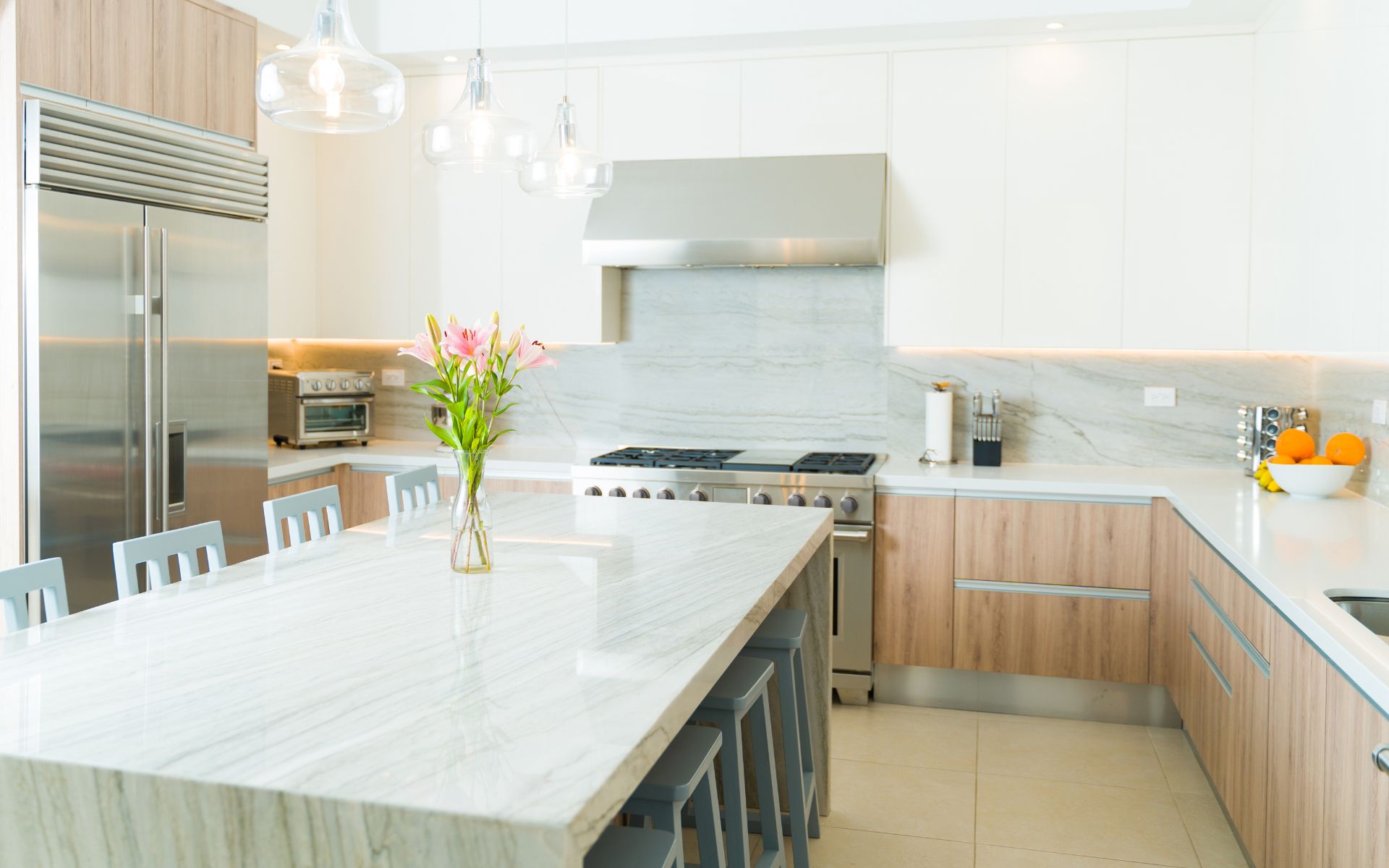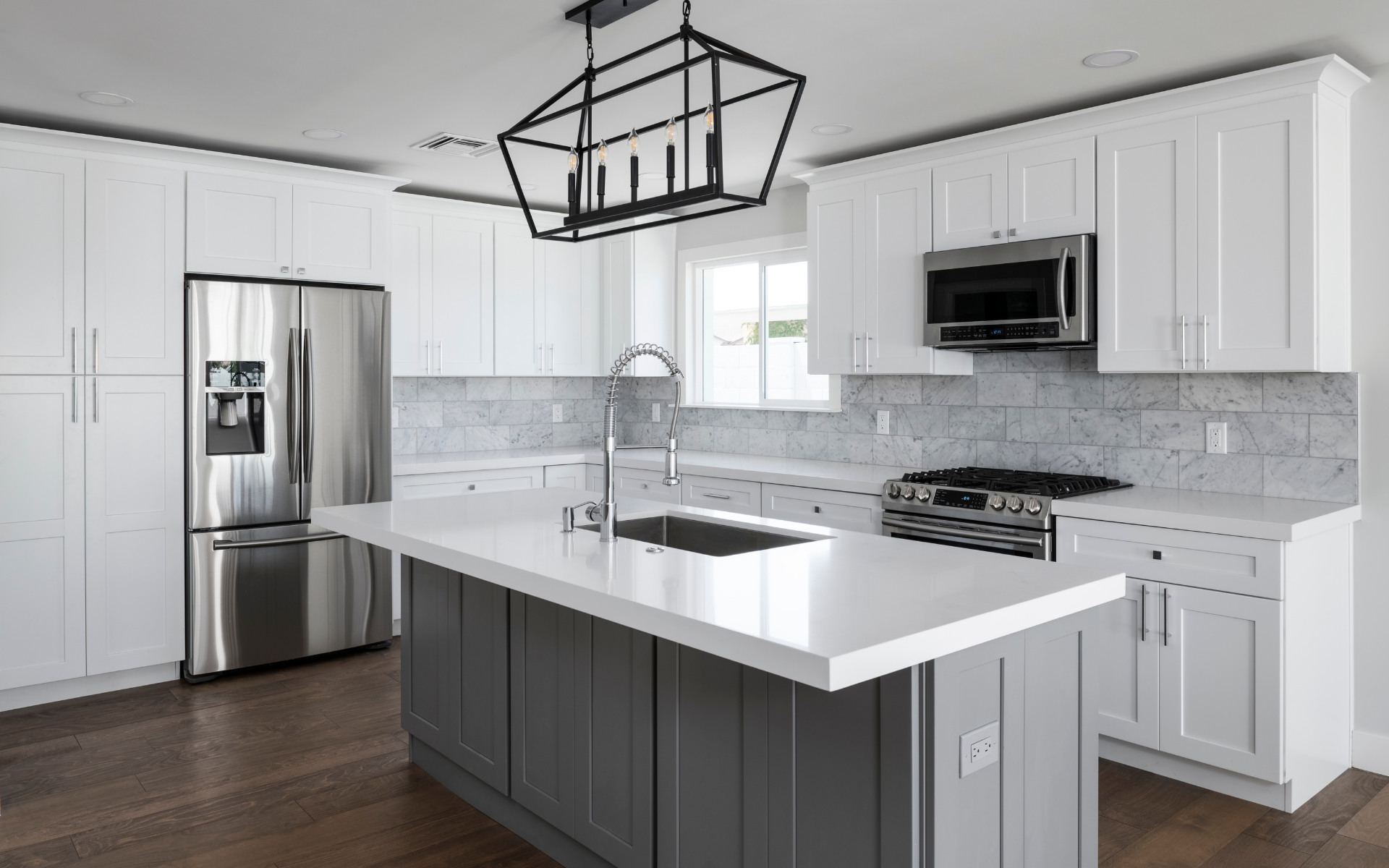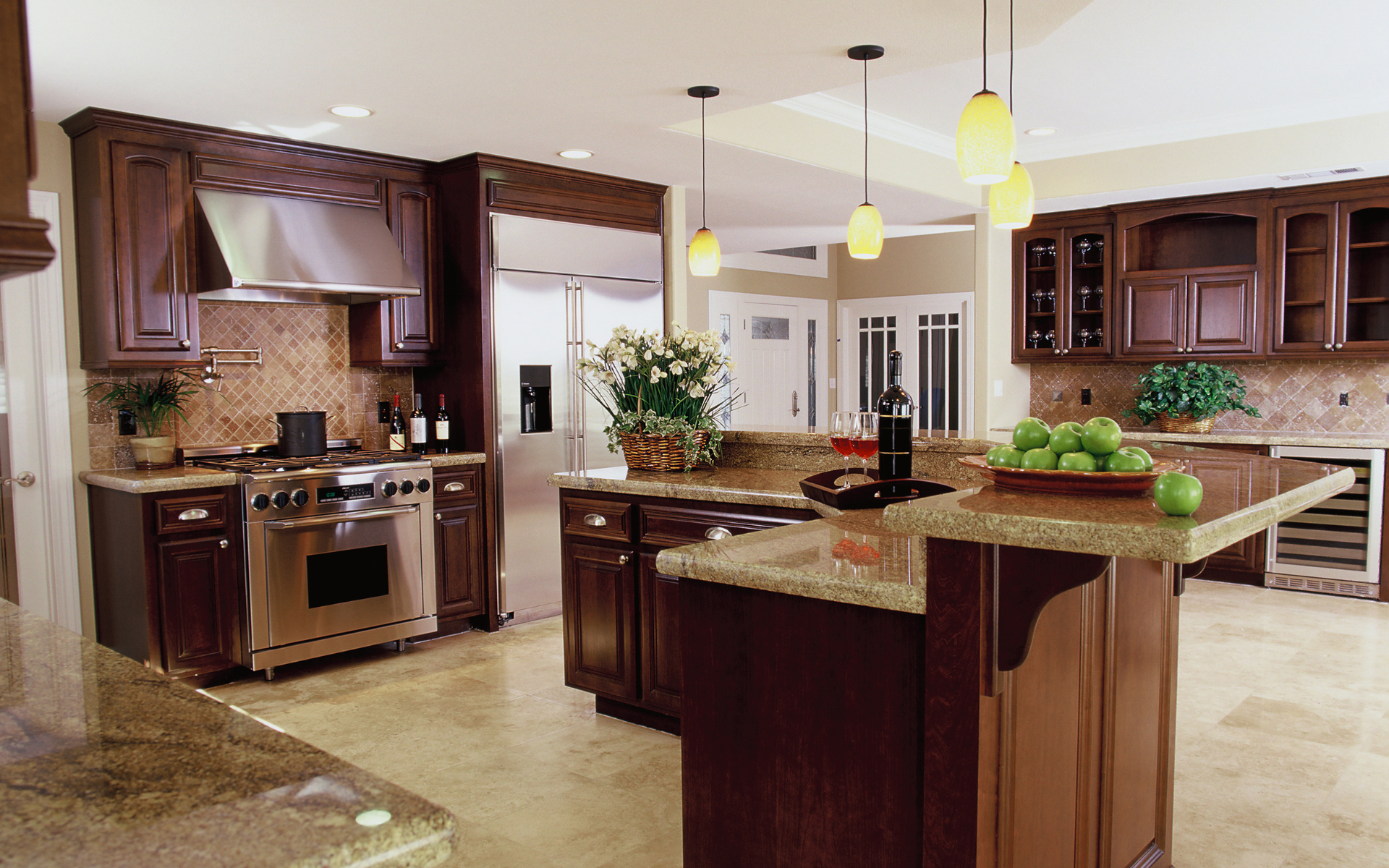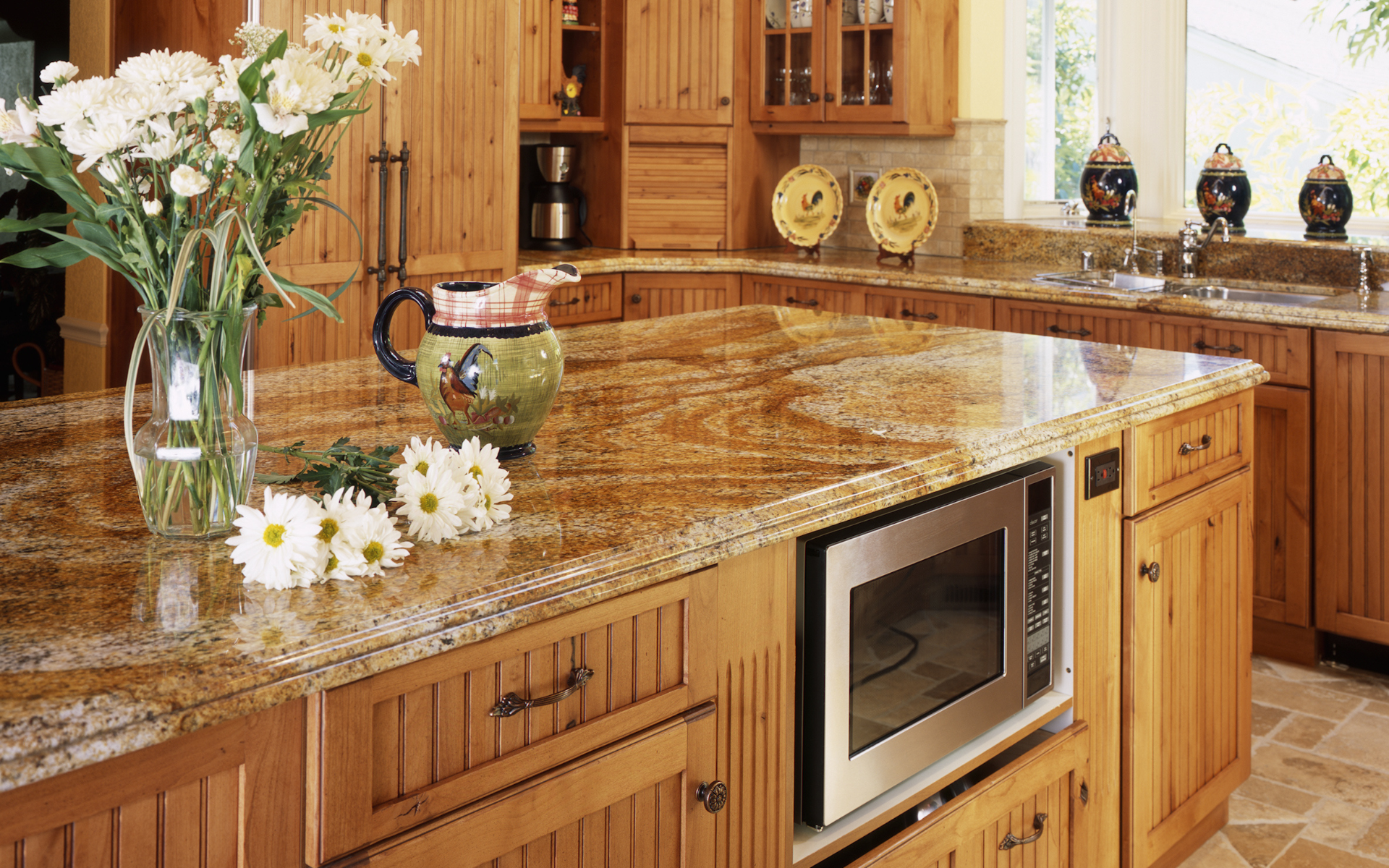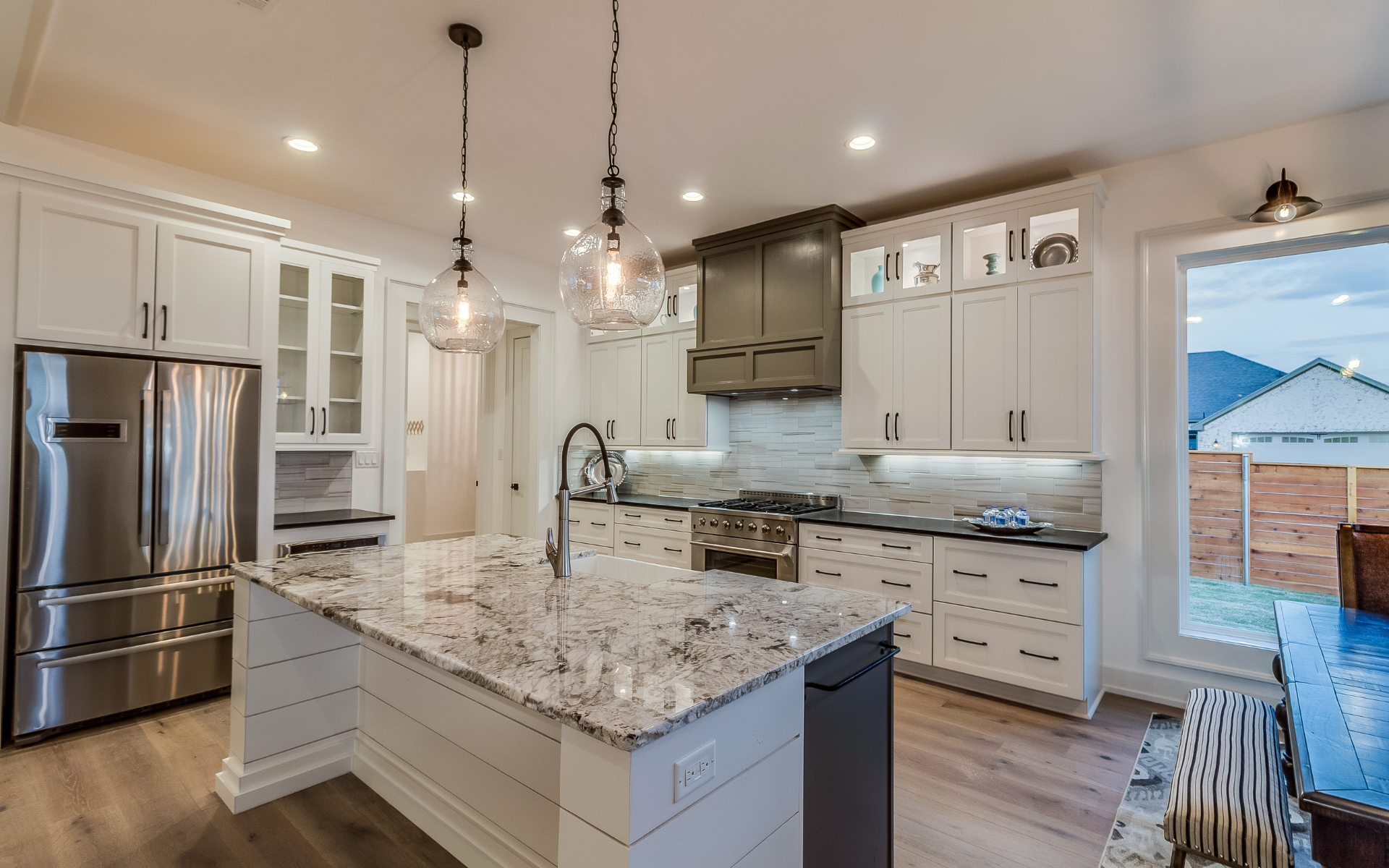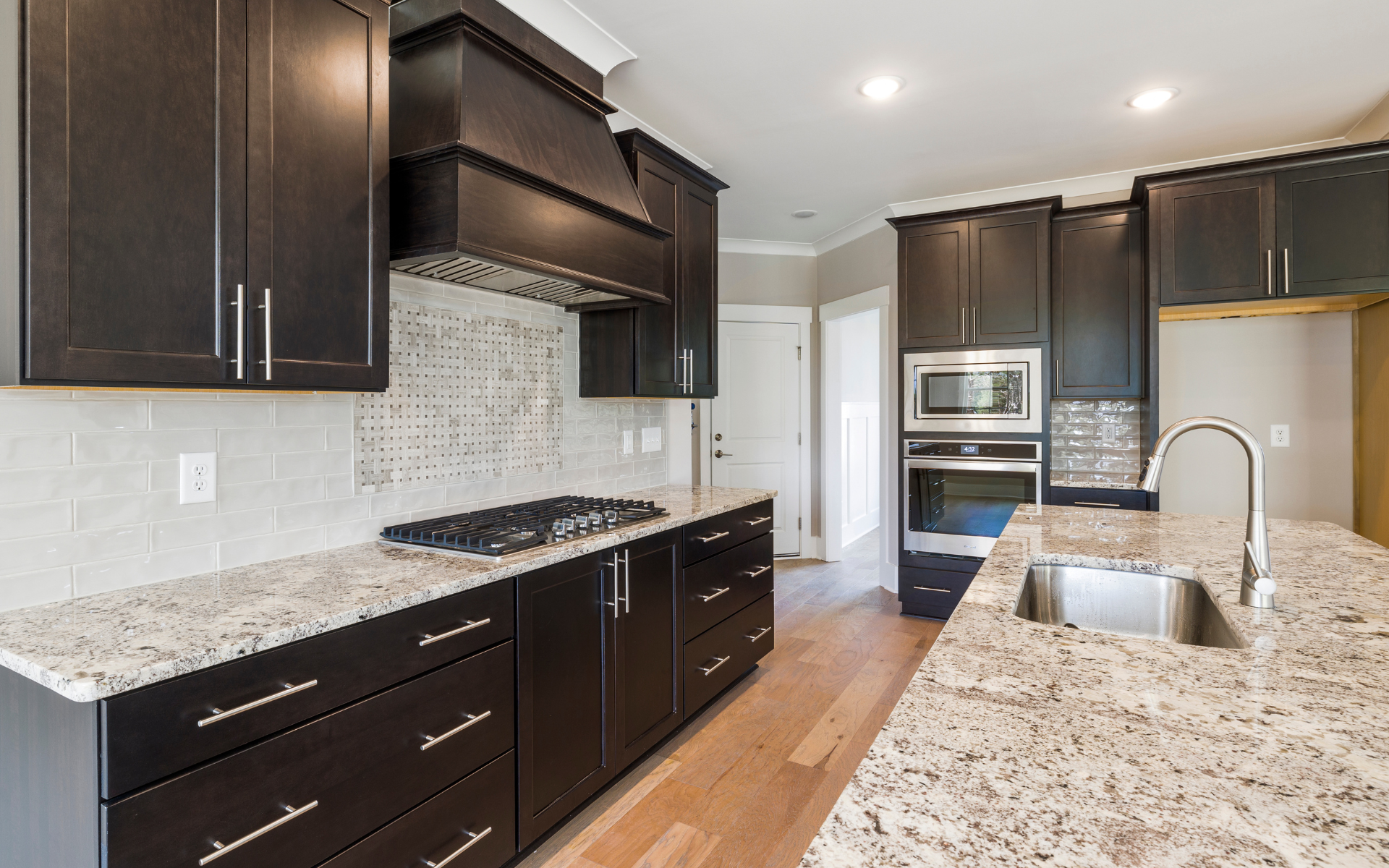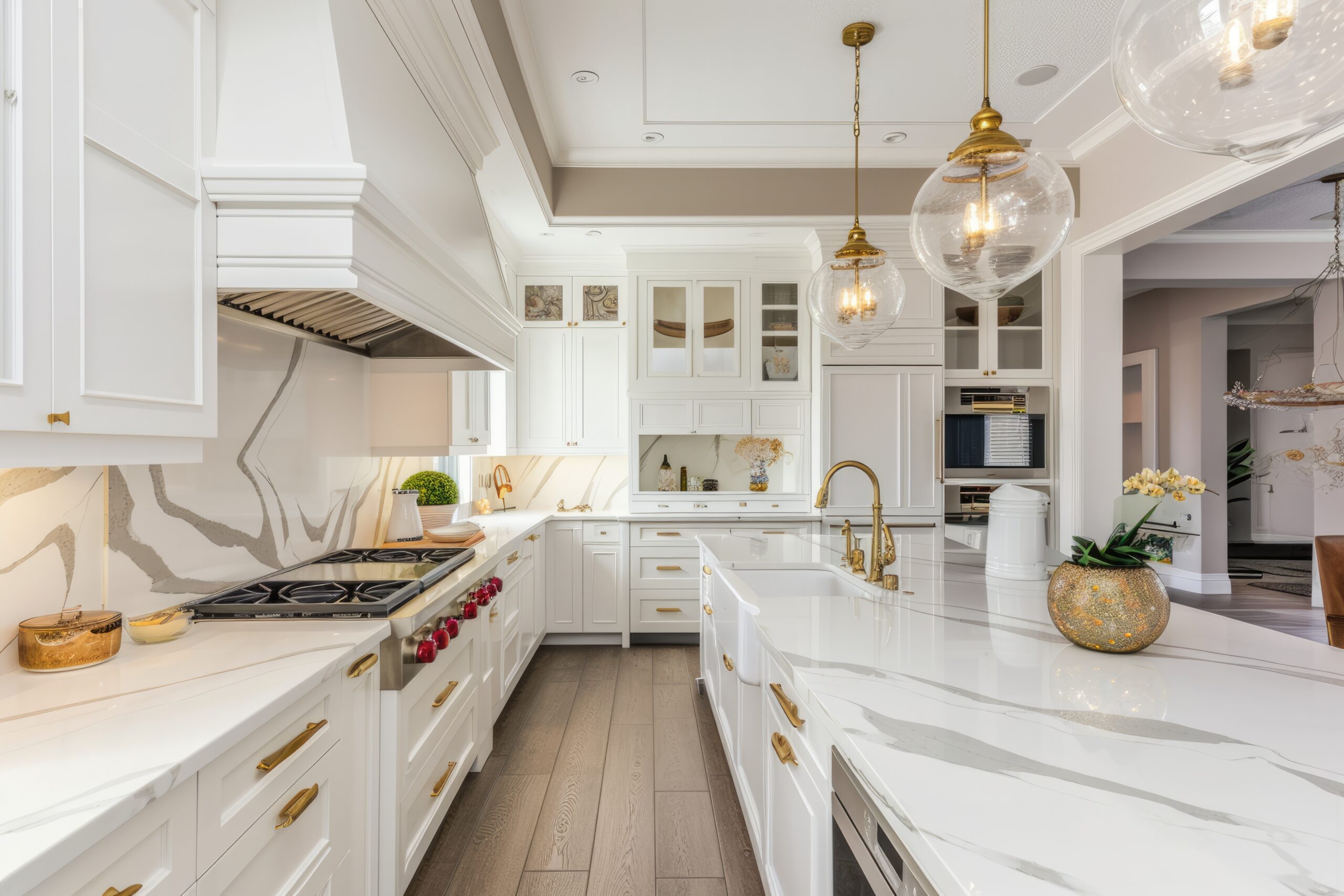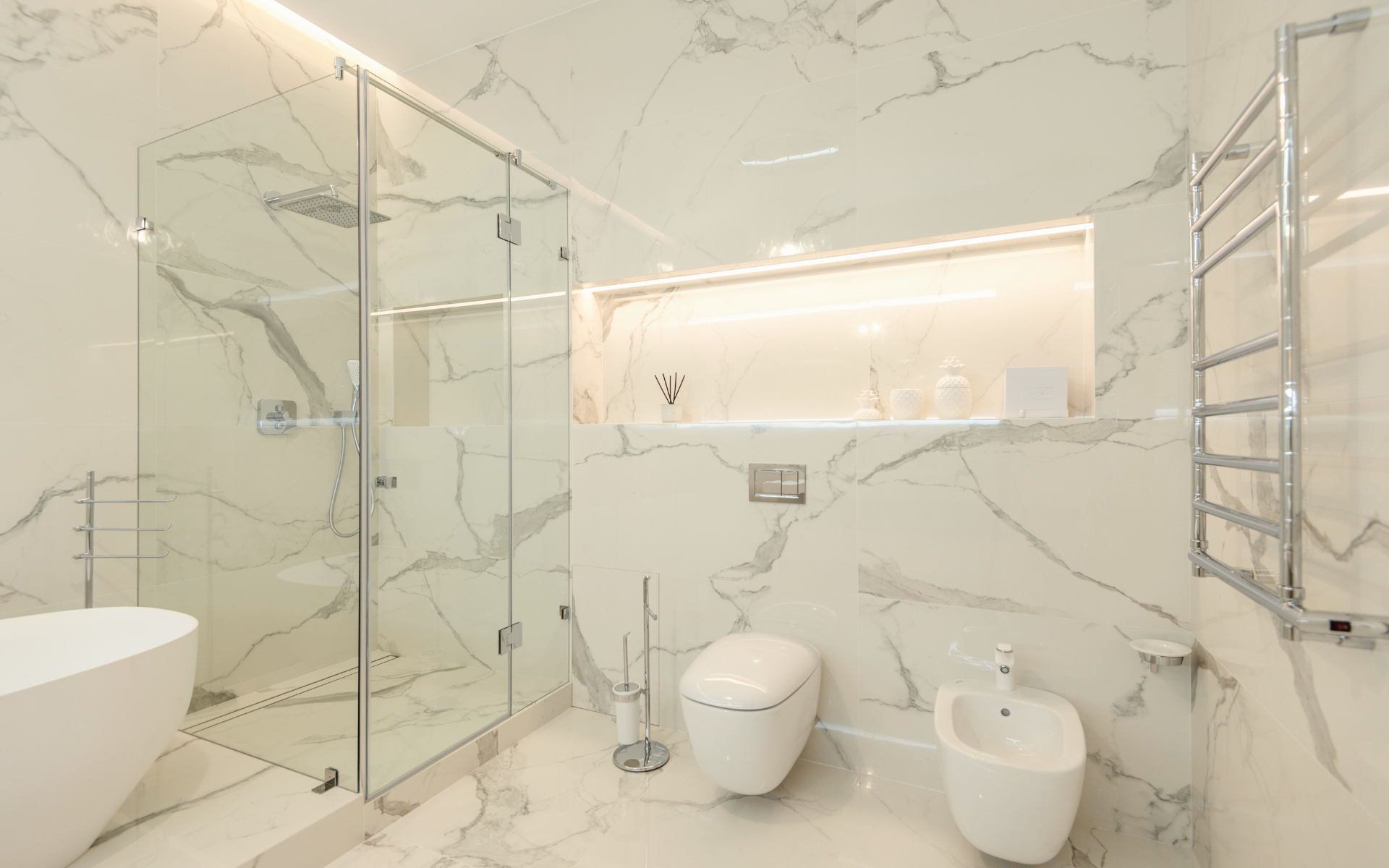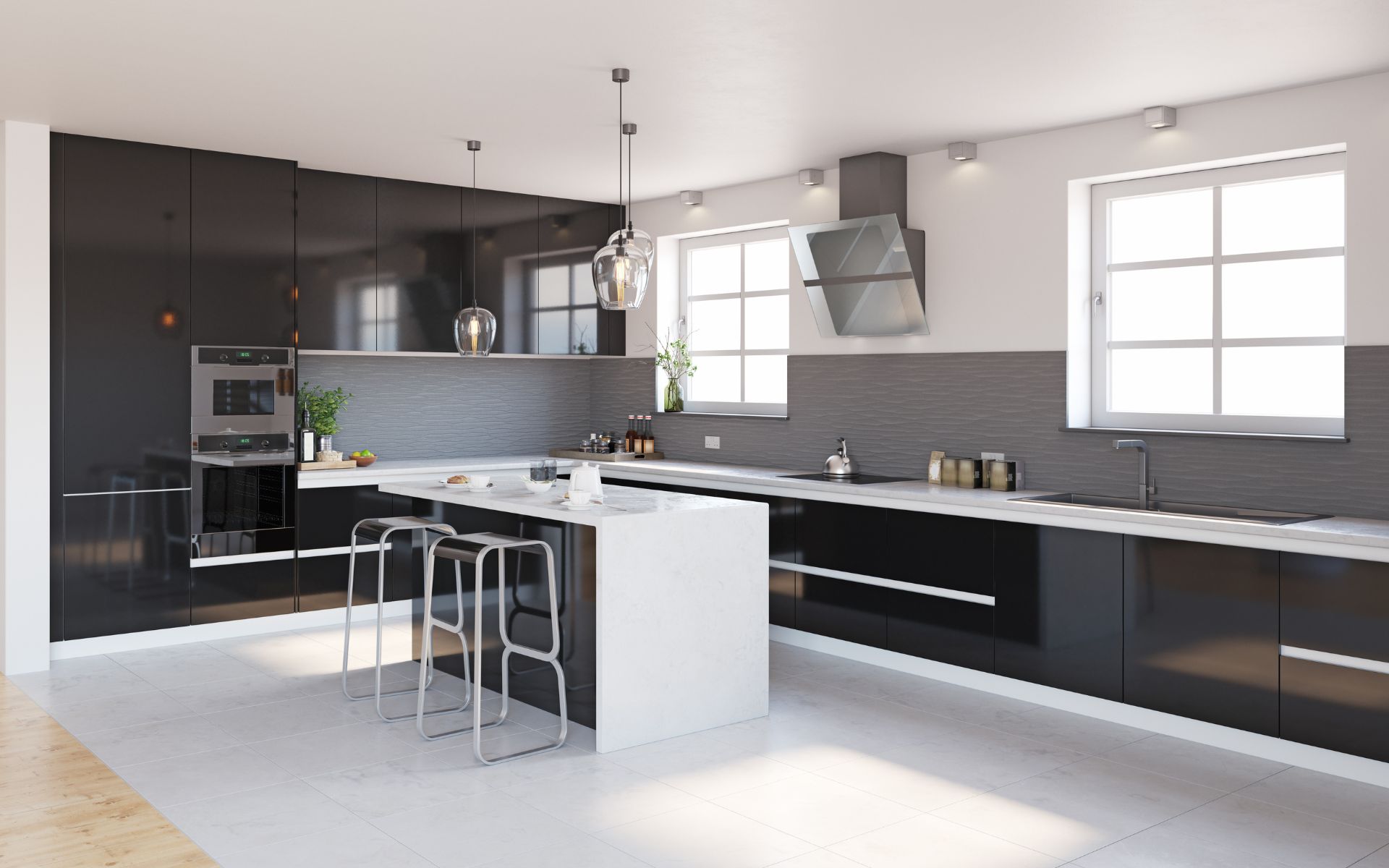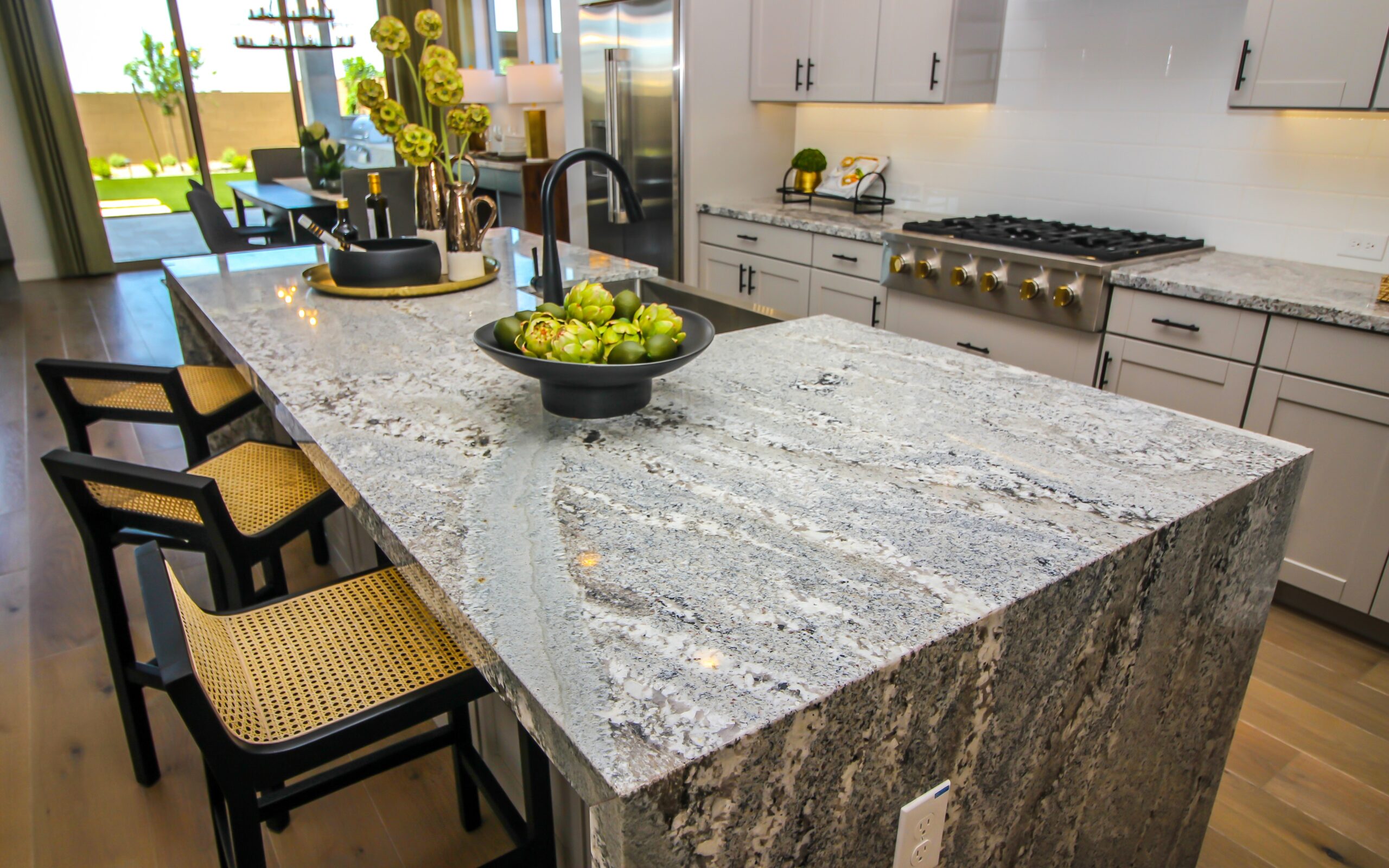The edge finish you choose for your new kitchen and bath countertop impacts aesthetics, functionality, and cost. Edges range from square to curved, simple to ornate. Consider the style you want along with practical factors like durability and cleaning ease when selecting among the different countertop edge types.
Read on as we explore popular countertop edge profiles, the various thickness options compatible with different counter materials, and the benefits of each top edge type.
Straight Edges
Straight edges provide a clean, simple line. They come in squared or beveled variations.
Square Edge
The square edge has a 90-degree angle between the back-lease edge countertop surface and the front-lease edge countertop side.
- Streamlined contemporary appearance
- Easy to clean along straight edges
- No special tools are needed for installation
- Typically included standard for laminate counters
Square edges work best for tile, concrete, laminate, and some solid surface countertops. Softer stones may chip.
Beveled Edge
The beveled edge inclines gently from the counter surface down to a blunted square outer edge.
- Slightly softer look than the square edge
- Bevel helps avoid chipped corners
- Stone and solid surface materials can pull off this edge
The 45-60 degree beveled angle requires specialized cutting tools for installation.
Eased Edge
This edge features a rounded corner transition between the mitered edge countertop surface and the front edge.
- Provides a softer profile than square square-edge
- Helps prevent sharp corner chips and cracks
Eased edges are commonly seen on quartz counters. The rounded edge shape is cut with automated machines.
Curved Edges
For creating a fluid, ornate appearance, curved edges add dramatic shaping. They come in gentle curves and dramatic profiles.
Bullnose Edge
The bullnose edge has a broad, gentle rounded surface that curves onto the front edge for substantial shaping.
- Creates a substantial, noticeable curved edge
- A softer rounded surface is easier on elbows
- Stone and quartz materials can be bullnose
Bullnose edges may gather more dirt than sharp edges.
Ogee Edge
Ogee edges have an elegant S-shaped curve on corners transitioning from bevel edge countertop to ogee edge top.
- Provides a highly decorative, ornate appearance
- Distinctive for upscale traditional spaces
- Works for stone like marble and granite
The indented curve requires meticulous cutting and polishing.
Demi-Bullnose
A smaller rounded curve shapes just the front edge itself, without extending onto the edge countertop surface.
- Subtler curving than full bullnose
- Prevents sharp corner chips/cracks
- Simpler installation than a full bullnose
Good choice if you want a hint of curve without dramatic rounding.
Dupont Edge
Named after the Dupont company, this edge has a rounded top surface and pointed corner tip.
- Combines curved and angled elements
- Distinctive appearance
- Durable tipped corner
The Dupont edge offers a unique profile combining classic straight lines and rounded curves.
Shark Nose Edge
Like a bullnose in reverse, the shark nose front edge profile has a rounded profile on the bottom and angles on top.
- Unusual curved under/beveled top
- Provides a safety edge
- Durable surface
The shark nose edge makes a bold style statement.
Specialty Edges
For truly custom counters, specialty edges add tailored details to contemporary designs.
Inset Edge
Inset edges feature a recessed section on the front for inserts like tiles or contrasting materials.
- Allows for decorative inlays
- Can incorporate multiple colors
- Provides customization options
Insets require extra fabrication precision.
Laminate Countertop Edges
Laminate edges snap or adhere on after counter installation for easy upgrades. When selecting edges for your laminate countertop during a kitchen remodeling project, opt for exterior-grade plywood cores rather than particleboard. Options include:
- Self-edge – Flat laminate strip edging
- Postform – Rounded laminate edge for retro charm
- Wilsonart Edge – Coordinating edges installed without adhesive
Mitered Edge
Mitered edges have sharply angled corners cut at 45 degrees for seamless counter joints.
- Allows countertops to fit together snugly
- Provides a finished look
- Ideal for corners and discontinuous counter spaces
Mitering adds complexity to cutting and installation.
Waterfall Edge
The countertop extends down vertically forming a sleek waterfall edge.
- Stylish minimalist edge treatment
- Hides seam between wall and counter
- Works for kitchen islands
Waterfall edges leave sink areas exposed requiring precise cutting.
How Will You Use Your Counters?
Your countertop usage habits impact the best edge choice. Consider these factors:
- Kids or frequent bar seating benefit from rounded edges for safety and comfort.
- Baker’s edges allow a custom lip keeping crumbs and ingredients contained.
- For heavy prep, straight edges make using the entire surface easier.
- Highly decorative edges like ogee and DupontEdges suit formal spaces.
- Rounded or beveled edges prevent chipping and cracks in stone counters.
Discuss your needs with a countertop pro to choose edges tailored to your design preference lifestyle.
Countertop Edge Styles by Material
Not all edges work with all countertop materials. Many require special tools and techniques. Here are the typical edges used for popular countertop material types:
Granite Countertop Edges
Granite works nicely with curved edges thanks to the stone’s durability. Popular granite edges:
- Bullnose
- Beveled
- Dupont
- Waterfall
Softer stones like marble may chip with dramatic curves. Avoid ultramodern profiles.
Quartz Countertop Edges
Engineered quartz stones support diverse edge options. Common choices include:
- Eased
- Bullnose
- Beveled
- Mitered
Quartz can also accommodate more intricate ogee and Dupont edges.
Solid Surface Countertop Edges
Solid surfaces like Corian can be routed and shaped to achieve different edge looks:
- Bullnose
- Beveled
- Mitered
- Ogee
- Inset
Edges are carved directly into the solid surface material.
Laminate Countertop Edges
For laminate counters, edges come from attached strips or post forming. Options include:
- Square
- Post formed rounded
- Self-edge flat laminate
- Wilsonart designer edges
Built-in laminate edges help disguise seams but limit profiles.
Tile Countertop Edges
Tile countertops can utilize metal, stone, or tile edging:
- Bullnose tile edging
- Metal bracket edges
- Stone slab edges
- Glass/stone mosaic insets
Edges prevent chipping and protect tile corners.
Concrete Countertop Edges
Concrete’s moldability allows different variations for emulating natural stone edges:
- Ogee
- Demi-bullnose
- Beveled
- Custom designs
Edges get poured directly into molds. Consistent concrete coloring prevents the creation of visible seams.
Countertop Edge Design Considerations
Beyond choosing a functional edge style, also consider the design impact of your edges:
- Visually weigh thicker edges like bullnose in larger spaces
- Softer curved edges feel more traditional versus straight modern edges
- Contrast edge and counter colors for pop – like white quartz with black edges
- Match edge profile style to kitchen or bath design (e.g. contemporary square edge for modern)
- Consistent edge styles visually unite separate counter-sections
- Complement other rounded design features like islands, sinks, and accessories
Incorporate edges into your overall kitchen or bathroom design vision. An inspired edge choice makes your space feel considered and cohesive.
Achieving the Perfect Countertop Edge
Your countertop edge choice impacts aesthetics, ergonomics, utility, and pricing. Carefully weigh the options when selecting edges to complement your countertop material, design style, and functional needs. Fortuitously, today’s broad range of countertop edge options and possibilities means you can find the perfect finishing touch to make your new counters truly special. Edges present a wonderful chance to define counters with personalized flair. So take the time to discover the edge profile and details that complete your countertop vision!

